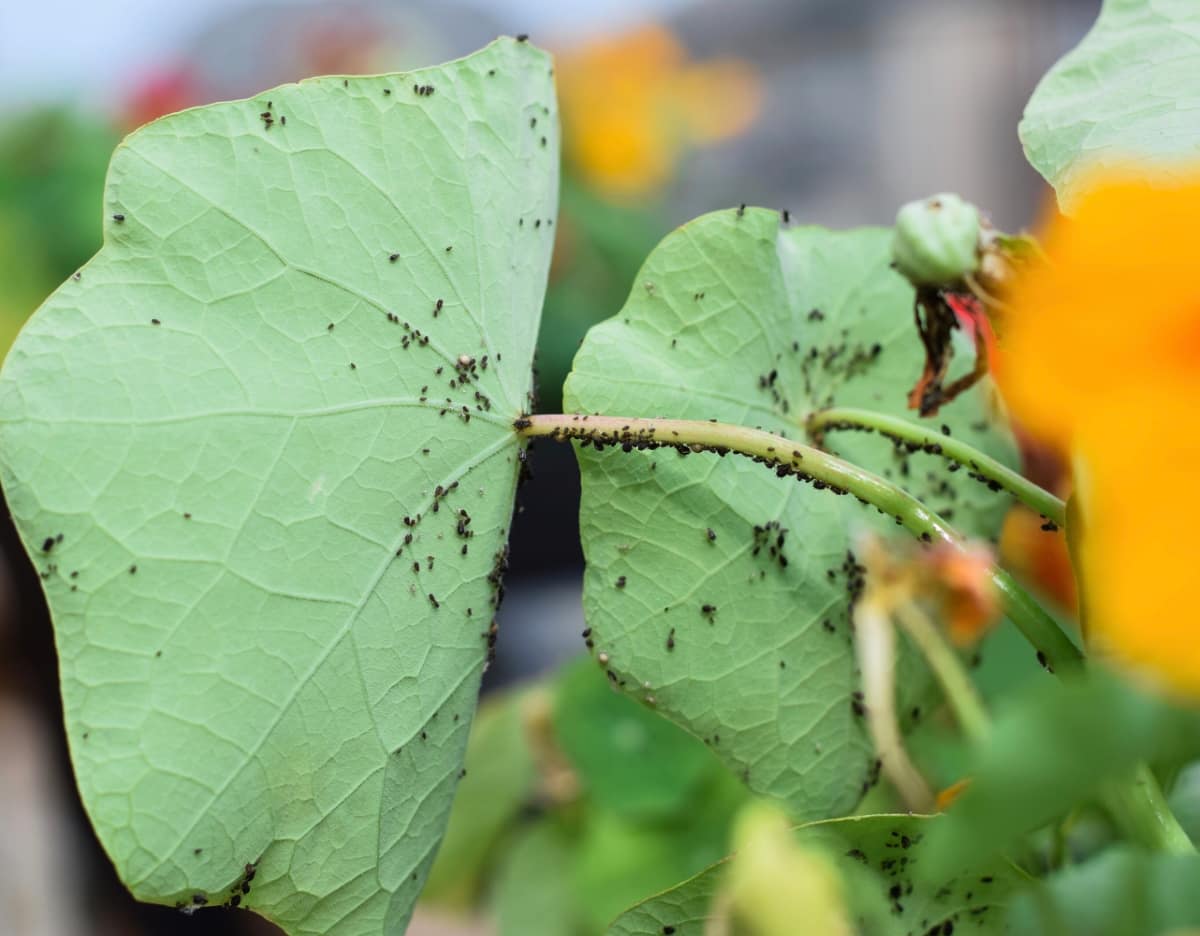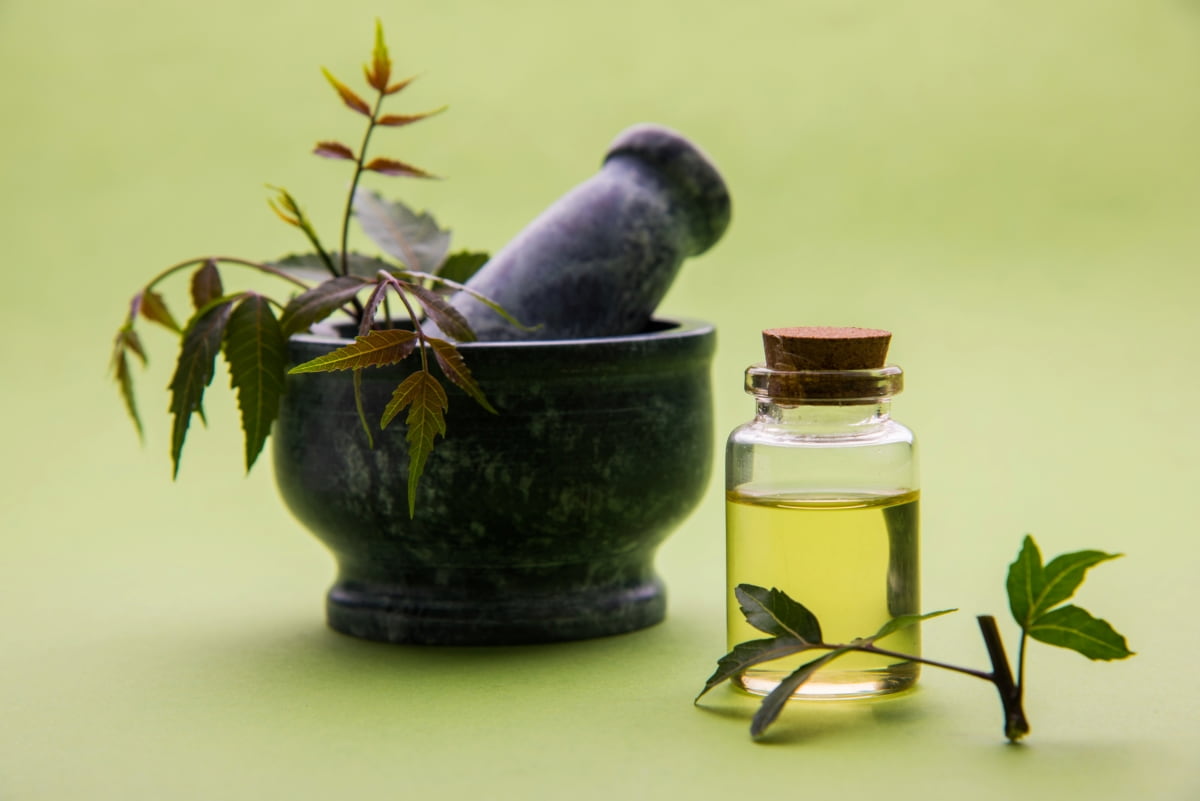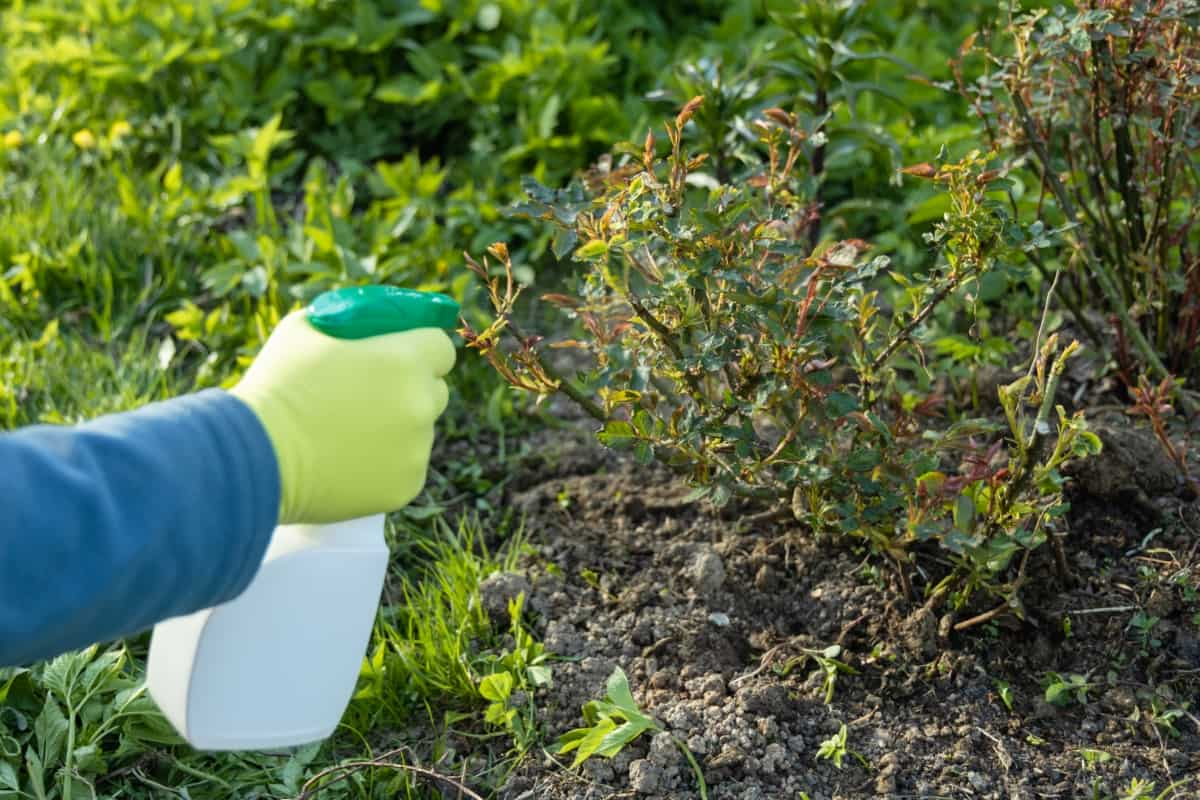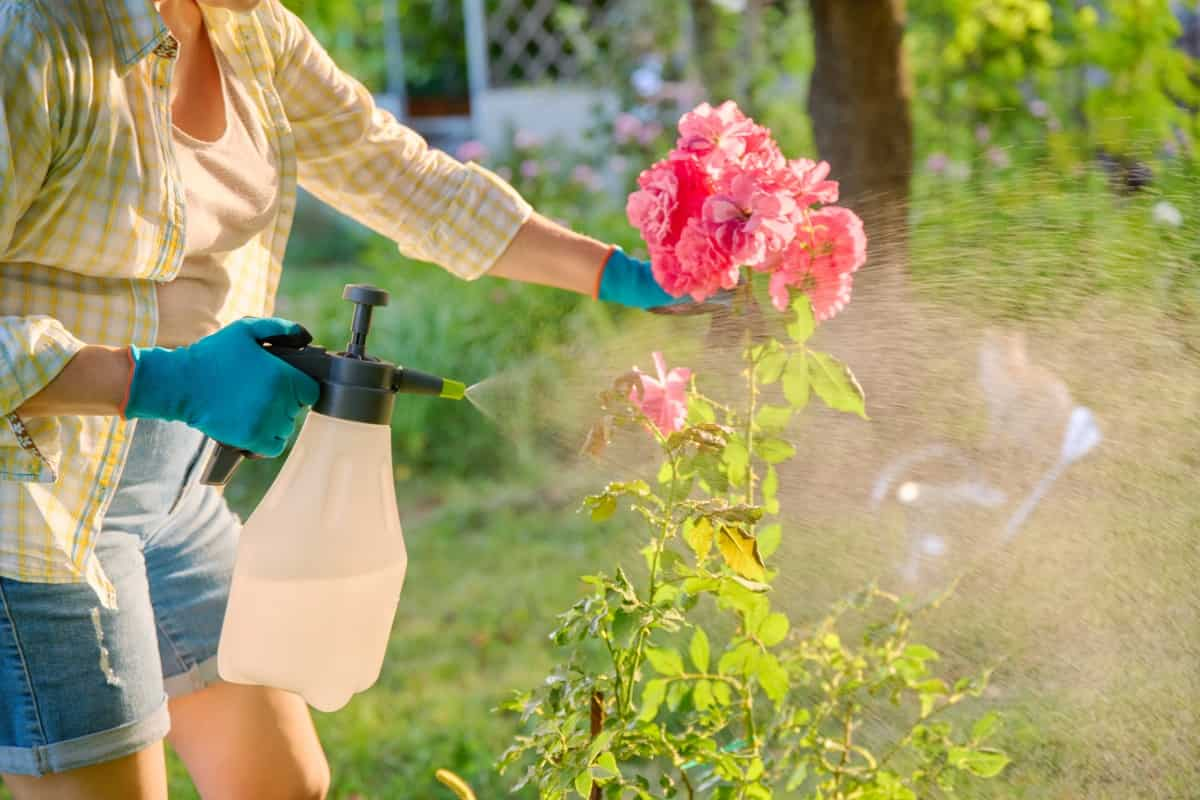Neem oil, extracted from the neem tree’s seeds (Azadirachta indica), is a potent and natural solution for controlling aphids in plants. With a rich history in traditional medicine and agriculture, neem oil is celebrated for its diverse applications, including pest management. This eco-friendly remedy acts as a powerful insecticide while being safe for plants, humans, and beneficial insects.

Neem Oil Application for Aphids Control
Neem Oil and its Benefits for Aphids
Neem oil is a versatile and powerful tool in the fight against aphids. It contains azadirachtin, a compound that prevents the feeding and reproductive processes of these sap-sucking insects. By acting as a natural insect growth regulator, neem oil inhibits the development of aphid larvae and disrupts their life cycle, preventing further infestations.
Additionally, neem oil possesses antifungal properties, offering a comprehensive defense against various plant diseases often exacerbated by aphids. Furthermore, neem oil acts as a deterrent, making plants less appealing to aphids. This dual action of repelling and disrupting aphid activity makes neem oil an effective, long-term solution without harming beneficial insects and pollinators like bees and ladybugs.
How to Prepare Neem Oil to Use on Aphids
Start by obtaining cold-pressed, 100% pure neem oil, ensuring its potency. Mix one to two teaspoons of neem oil with a mild liquid soap or insecticidal soap to enhance its effectiveness. The soap helps break down the oil, making it easier to distribute and adhere to plant surfaces. Combine the neem oil-soap mixture with water in a sprayer, using approximately 4 liters of water per teaspoon of neem oil. Thoroughly shake the solution to achieve a uniform blend.
How to Apply Neem Oil on Aphids
Begin by selecting a day with mild temperatures, ideally in the early morning or late evening, to prevent potential damage to plants due to direct sunlight. Thoroughly inspect the affected plants, identifying aphid-infested areas. Load the neem oil solution into a sprayer, preferably a handheld one, for precise application.
In case you missed it: How to Use Neem Oil on Blanket Flower Plants: A Natural Way to Get Rid of Bugs from Blanket Flowers

Start spraying the affected plants, focusing on the undersides of leaves and areas with dense aphid populations. It works best when it comes into direct contact with pests, so aim for thorough coverage. Take care to coat the entire plant, paying attention to new growth and potential hiding spots for aphids.
Mixing and Dilution for the Right Concentration of Neem Oil for Aphids
To create a neem oil solution, mix one to two teaspoons of neem oil with a small amount of mild liquid soap or insecticidal soap. The soap aids in emulsifying the oil, enhancing its dispersion in water. Next, dilute the neem oil-soap mixture in water. Use approximately 4 liters of water per teaspoon of neem oil. Thoroughly blend the solution by shaking the container to achieve a consistent mix.
It’s crucial to ensure the neem oil is well-emulsified in the water to avoid clogging the sprayer nozzle. When preparing the neem oil solution, consider the severity of the aphid infestation. For heavier infestations, opt for a slightly higher concentration of neem oil, but avoid exceeding recommended limits to prevent potential harm to plants. Adjustments may be necessary based on the specific neem oil product and the plants being treated, so always refer to the product’s instructions for guidance.
How Long Does Neem Oil Stay Effective on Aphids?
The effectiveness of neem oil on aphids varies based on environmental factors, application frequency, and the severity of the infestation. Generally, neem oil provides residual protection for about 7 to 14 days after application. Factors such as rain, sunlight, and new plant growth can influence its durability.
Reapplication is recommended within this timeframe to disrupt the aphid life cycle continually. Regular and consistent use helps maintain a protective barrier, preventing aphid resurgence. Monitoring plant health and aphid activity is crucial to determine the optimal frequency of neem oil applications.
Using Neem Oil Along with Other Pest Control Methods
Enhance pest control efficacy by integrating neem oil with other methods for a comprehensive approach. Combine neem oil application with beneficial insect attraction, such as ladybugs and lacewings, to create a natural predator-prey balance. Additionally, practicing the best garden hygiene by removing debris and weeds minimizes aphid hiding spots.
In case you missed it: How to Use Neem Oil on Leather Flower Plants: A Natural Way to Get Rid of Bugs

Rotate crops and diversify plant varieties to deter aphids. Utilizing neem oil in conjunction with organic insecticidal soaps or horticultural oils can create a synergistic effect, improving overall pest control. Employing a variety of methods discourages pest resistance and promotes a healthier garden ecosystem.
Some Common Pests and Diseases that Neem Oil Can Control on Aphids
Neem oil is a versatile remedy with a broad spectrum of effectiveness against various pests and diseases that often accompany aphid infestations. Besides aphids, neem oil can control common pests such as spider mites, whiteflies, and caterpillars. Its antifungal properties make it effective against powdery mildew, rust, and black spot, addressing the diseases often exacerbated by aphids. The dual-action of neem oil, both as an insecticide and fungicide, offers a comprehensive solution for maintaining overall plant health and resilience.
How to Monitor the Effectiveness of Neem Oil on Aphids
Begin by inspecting plants for signs of aphid activity, including distorted leaves, sticky honeydew residue, and the presence of live aphids. After applying neem oil, observe changes in aphid populations over the following days and weeks. Monitor the overall health of treated plants, looking for new growth and signs of pest damage reduction. If aphid numbers persist or increase, consider adjusting the frequency of neem oil applications.
Assess the underside of leaves for live aphids and their eggs, as neem oil is most effective when it comes into contact with pests. Experiment with spot treatments on particularly affected areas to gauge responsiveness. Regular monitoring enables timely adjustments to the neem oil application schedule, ensuring a proactive approach to aphid control and preventing potential resistance development.
Safety Precautions to Take when Using Neem Oil on Aphids
- Wear protective clothing, including hand gloves and goggles, when handling and applying neem oil to avoid skin and eye irritation.
- Keep pets and children away from treated areas until the spray has dried.
- Apply neem oil in mild weather conditions to prevent potential harm to plants due to extreme temperatures.
- Avoid applying neem oil during the high heat of the day, as this can lead to plant stress.
- Always follow the manufacturer’s instructions regarding dilution ratios and application frequency.
- Overuse of neem oil can lead to phytotoxicity, causing damage to plants. Test neem oil on a small portion of the plant before widespread application to ensure compatibility.
In case you missed it: How to Use Neem Oil on Nasturtium Plants: A Natural Way to Get Rid of Bugs from Nasturtiums

Conclusion
Neem oil stands as a potent and natural remedy for combatting aphids, offering an eco-friendly solution to plant infestations. Its dual benefits as an insecticide and fungicide make it a versatile choice, promoting plant health while addressing common pests and diseases. Embracing neem oil aligns with sustainable practices, providing an effective and environmentally conscious means to safeguard plants from aphid damage.
- Feed Your Flock for Less: Top 10 Tips to Save on Chicken Feed
- Ultimate Guide to Ossabaw Island Hog: Breeding, Raising, Diet, and Care
- Hatching Answers: The Top 10 Reasons Your Chickens Aren’t Laying Eggs
- Eggs and Economics: Breaking Down the Cost of Raising Backyard Chickens
- Defend Your Greens: Proven Methods to Keep Iguanas Out of Your Garden
- Ultimate Guide to Cinnamon Queen Chicken: A Comprehensive Guide for Beginners
- Ultimate Guide to California Tan Chicken: Breeding, Raising, Diet, Egg-Production and Care
- Ultimate Guide to Marsh Daisy Chicken: Breeding, Raising, Diet, and Care
- 10 Types of Chicken Farming Businesses You Can Start for Profits